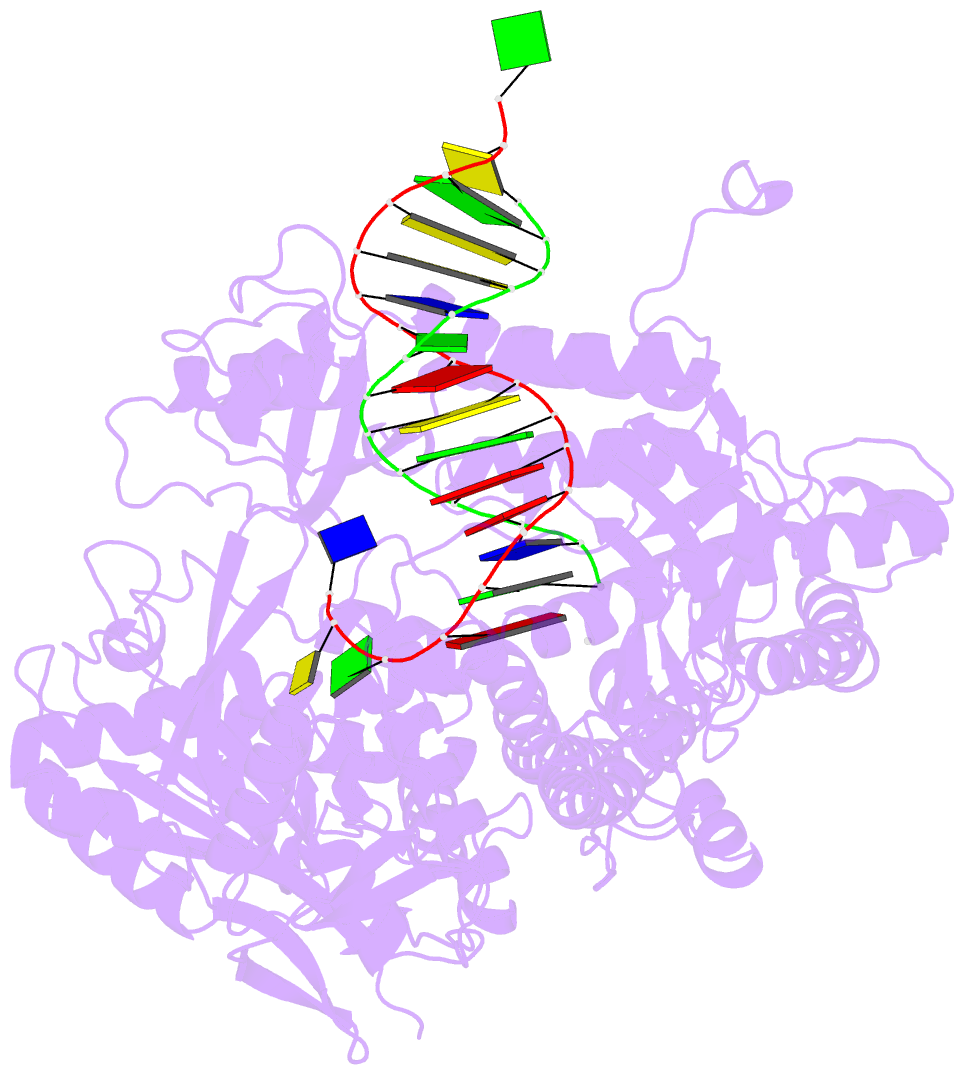Summary information and primary citation
- PDB-id
- 3uiq; SNAP-derived features in text and JSON formats;
DNAproDB
- Class
- transferase-DNA
- Method
- X-ray (1.879 Å)
- Summary
- Rb69 DNA polymerase ternary complex containing dupnpp
- Reference
- Xia S, Eom SH, Konigsberg WH, Wang J (2012): "Bidentate and tridentate metal-ion coordination states within ternary complexes of RB69 DNA polymerase." Protein Sci., 21, 447-451. doi: 10.1002/pro.2026.
- Abstract
- Two divalent metal ions are required for primer-extension catalyzed by DNA polymerases. One metal ion brings the 3'-hydroxyl of the primer terminus and the α-phosphorus atom of incoming dNTP together for bond formation so that the catalytically relevant conformation of the triphosphate tail of the dNTP is in an α,β,γ-tridentate coordination complex with the second metal ion required for proper substrate alignment. A probable base selectivity mechanism derived from structural studies on Dpo4 suggests that the inability of mispaired dNTPs to form a substrate-aligned, tridentate coordination complex could effectively cause the mispaired dNTPs to be rejected before catalysis. Nevertheless, we found that mispaired dNTPs can actually form a properly aligned tridentate coordination complex. However, complementary dNTPs occasionally form misaligned complexes with mutant RB69 DNA polymerases (RB69pols) that are not in a tridentate coordination state. Here, we report finding a β,γ-bidentate coordination complex that contained the complementary dUpNpp opposite dA in the structure of a ternary complex formed by the wild type RB69pol at 1.88 Å resolution. Our observations suggest that several distinct metal-ion coordination states can exist at the ground state in the polymerase active site and that base selectivity is unlikely to be based on metal-ion coordination alone.





